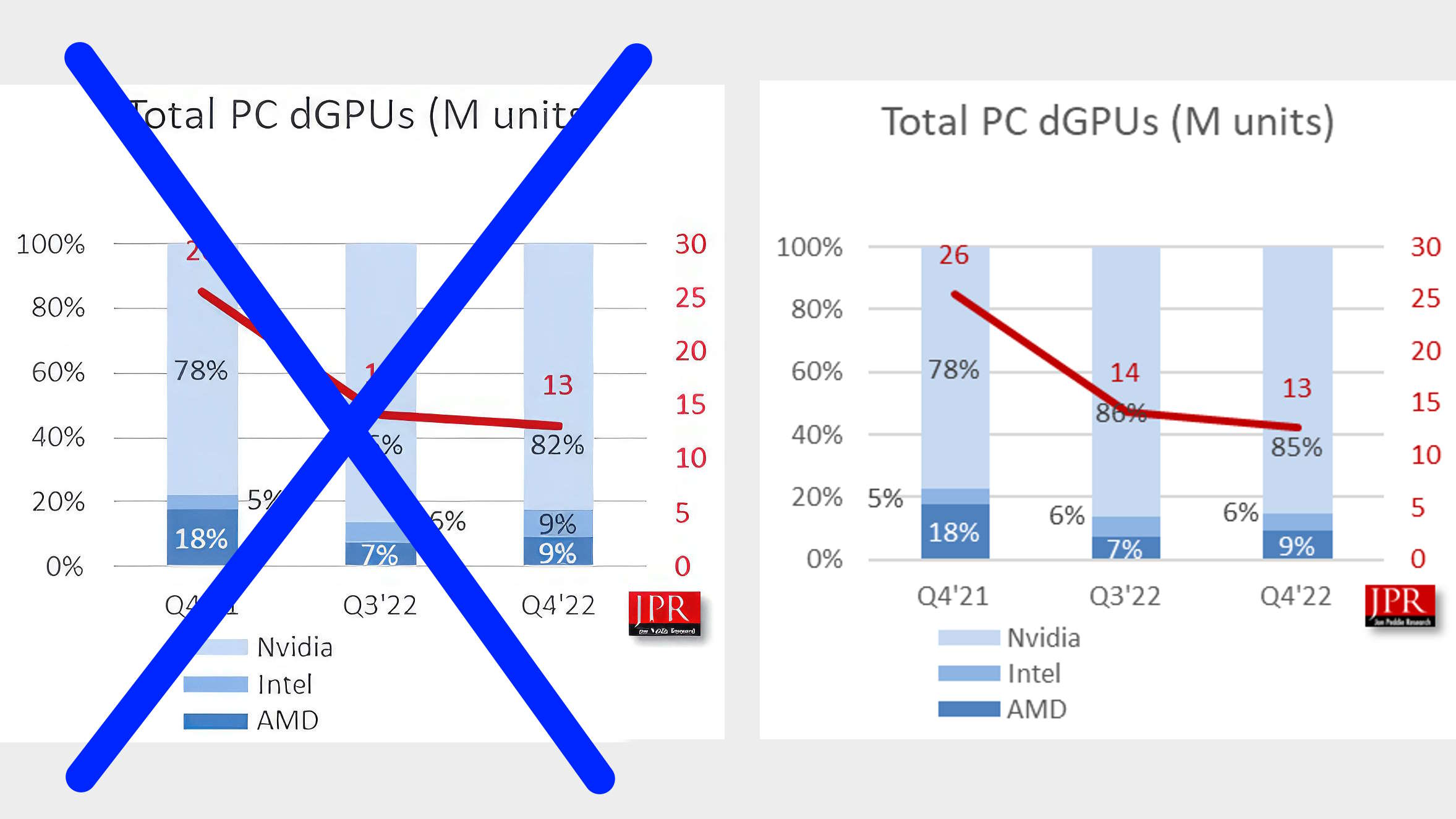How Intel caught up to AMD's graphics card sales: Bad maths
Yeah, they didn't. Analyst group, Jon Peddie Research, wrongly counted 60,000+ expensive data centre GPUs when making its calculations.

A report from noted industry analysts Jon Peddie Research (JPR) last week indicated that Intel had inexplicably managed to achieve parity with AMD's dGPU sales having only just got itself into the graphics card game. The ol' Pedster has now fessed up that they got the mathematics all kinds of wrong when counting the chips out.
Intel did not in fact sell the same number of graphics cards as AMD in the last three months of 2022. JPR had erroneously been counting some 60,000+ Ponte Vecchio data centre GPUs that were going into the Aurora supercomputer at the Argonne National Laboratory. And that's are some pricey graphics silicon, which ended up seriously skewing the numbers the analysts were playing around with.
JPR had been using the average selling price of Intel's discrete GPUs to measure its graphics card shipments, and the numbers it had available included all of the company's data centre chips.
It has since remodelled the data and issued an amended graph detailing the revised split in dGPU shipments between Intel, AMD, and Nvidia.
"We have remodeled Intel's Q4 dGPU shipments by subtracting the 60,000-plus-high ASP Ponte Vecchio dGPUs," says Jon Peddie himself. "We have never counted AMD or Intel GPU-compute GPUs in our quarterly reports and got caught by surprise by Intel. We don't think Intel intended to deliberately mislead the industry and simply isn't used to dGPU consumer vs. data center GPU shipment differentiation—a dGPU is a dGPU (except they aren't)."

So, in the end Intel discrete GPU sales share remained the same between the different quarters (at 6%) leaving AMD still in the lead at 9% of the total shipped graphics cards.
It's interesting to note that when JPR remodelled its data that 3% chunk taken away from Intel just translated into another 3% on top of Nvidia's already hefty lead in the dGPU race. The green team went from having an 82% share of the shipped GPUs to fully 85% of them.
The biggest gaming news, reviews and hardware deals
Keep up to date with the most important stories and the best deals, as picked by the PC Gamer team.
In reality then it doesn't really make for much better reading if you're big on AMD.
Best CPU for gaming: Top chips from Intel and AMD
Best gaming motherboard: The right boards
Best graphics card: Your perfect pixel-pusher awaits Best SSD for gaming: Get into the game first

Dave has been gaming since the days of Zaxxon and Lady Bug on the Colecovision, and code books for the Commodore Vic 20 (Death Race 2000!). He built his first gaming PC at the tender age of 16, and finally finished bug-fixing the Cyrix-based system around a year later. When he dropped it out of the window. He first started writing for Official PlayStation Magazine and Xbox World many decades ago, then moved onto PC Format full-time, then PC Gamer, TechRadar, and T3 among others. Now he's back, writing about the nightmarish graphics card market, CPUs with more cores than sense, gaming laptops hotter than the sun, and SSDs more capacious than a Cybertruck.


